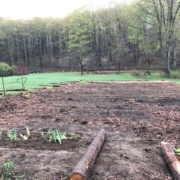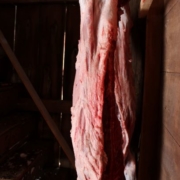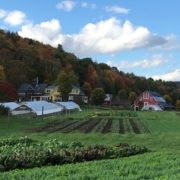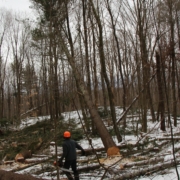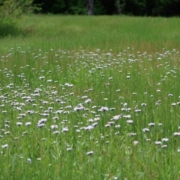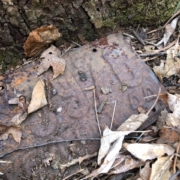Turning a Patch of Lawn into a Vegetable Garden, Part 2
Year two of the garden project started with a decision: was I going to keep using a tractor to work the earth?
Like many of you, I grew up thinking that you needed to deeply till the soil to grow things in it. As a boy, I remember being beat up by the family roto-tiller, the thing pitching me around like a bull as I tried to hang on to it. In my twenties I worked on a vegetable farm, and we basically used the same techniques as we used in the home garden, just with better equipment. Every spring, we broke the earth with a three-bottom plow. We then disked, then spread manure, then used a tractor-mounted tiller to make fluffy beds. The soil was so soft and loose when you were done that you wanted to lay down and take a nap in it.
Of course the downside to soft, loose dirt is that there’s no structure anymore, which leaves the soil vulnerable. Without a plant layer to act as a roof, topsoil can dry out and blow away, rain water gushes in instead of trickling in, ecosystems full of mycorrhizae and microbes and insect life get all smashed up. A no-till farming/gardening advocate would tell you that the plow is a pariah, and best practice involves keeping dirt as green as possible for as long as possible, then work only the top few inches of soil, leaving the subsoil as intact as possible.
We want to dig deeply into the topic of soil in Volume II of the Almanac, talk to some growers with different perspectives on best practice and report what we hear. My sense is that it’s not a case of right or wrong, it’s a matter of scale, technique, available resources, and what trade-offs you’re prepared to make.
In the meantime, where it comes to this garden, I decided to pursue a modified no-dig approach. Instead of plowing and disking this year, I simply scratched the soil surface with a York rake to break up the dead buckwheat litter. I blew my budget by investing $100 in a broadfork – basically a pitchfork on steroids that lifts compacted soil. And I borrowed a twist tiller, which is a tool you plunge into the earth and twist to break up a planting bed. If the hand tools work, I’ll be able to recoup much of the cost by selling the old roto-tiller that sits in my garage.

